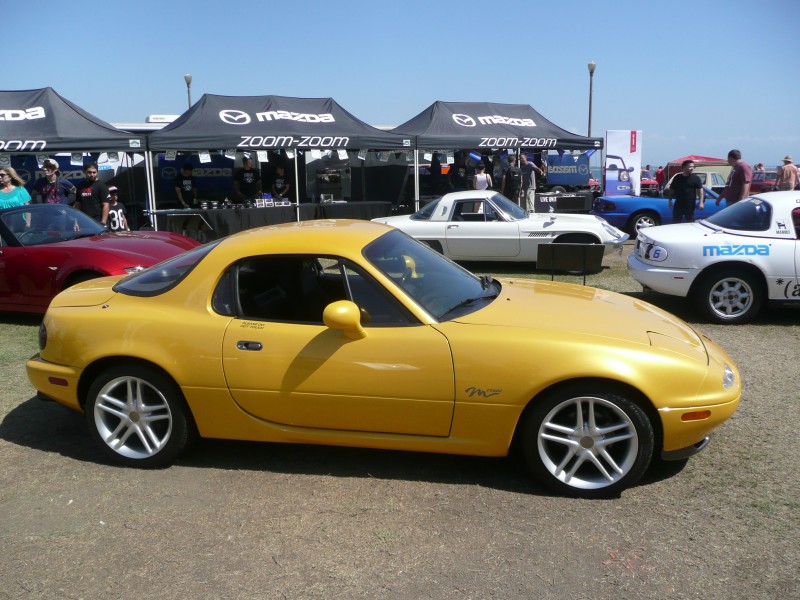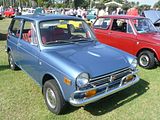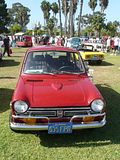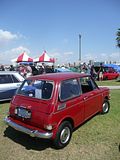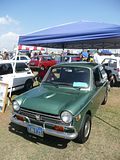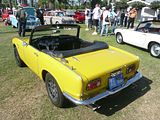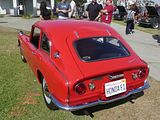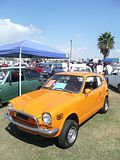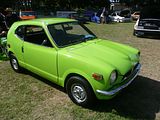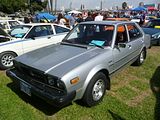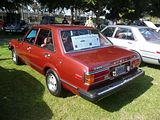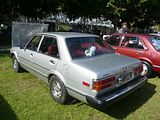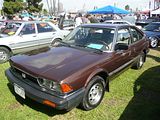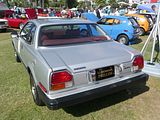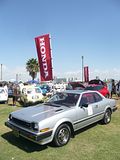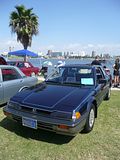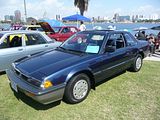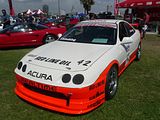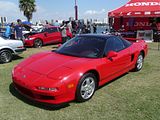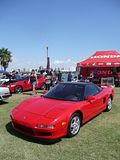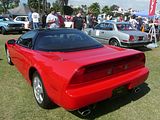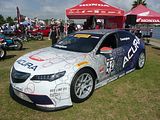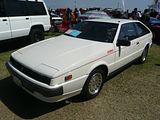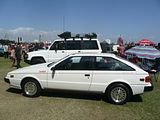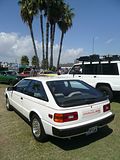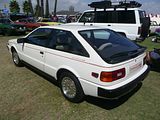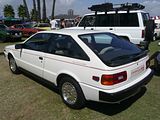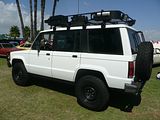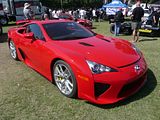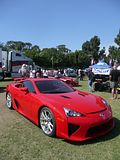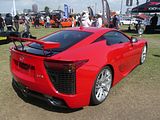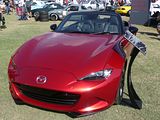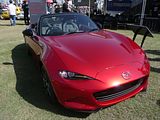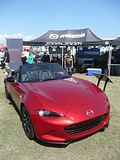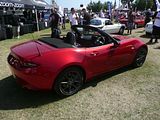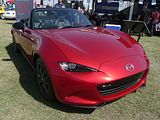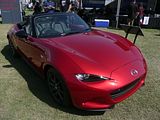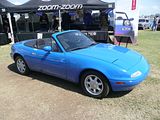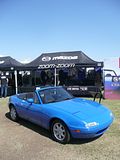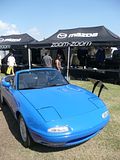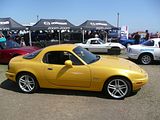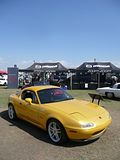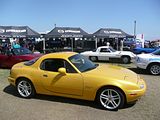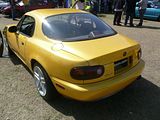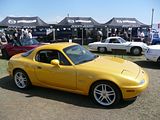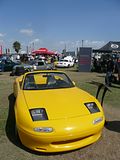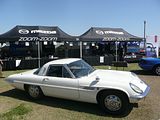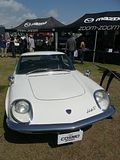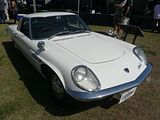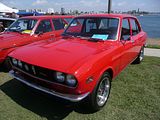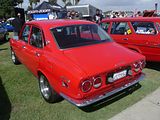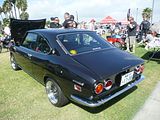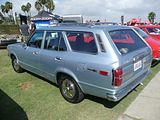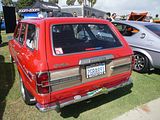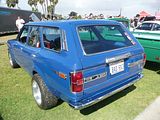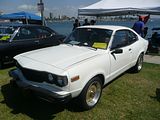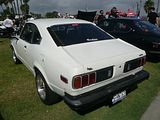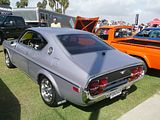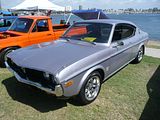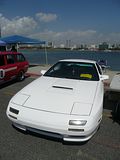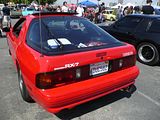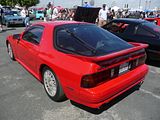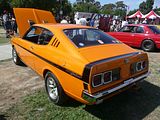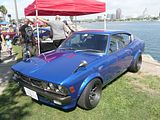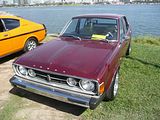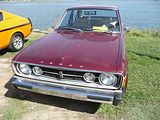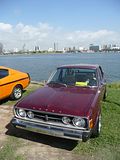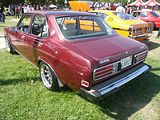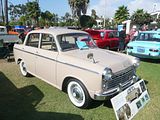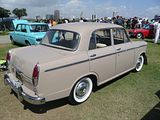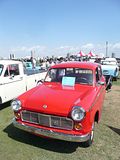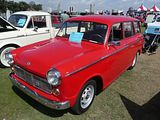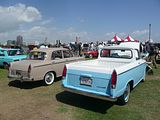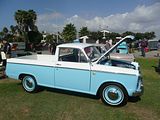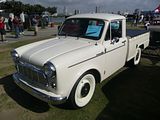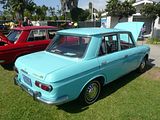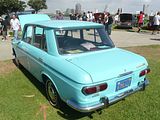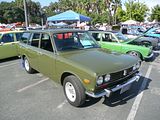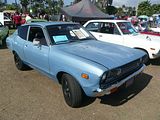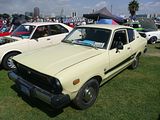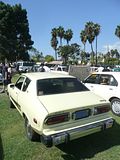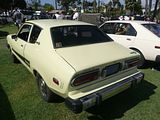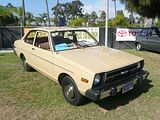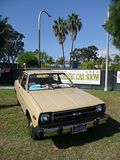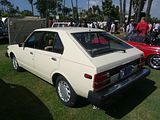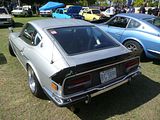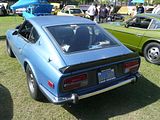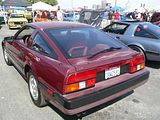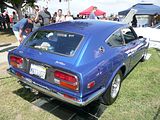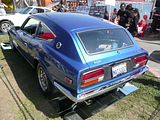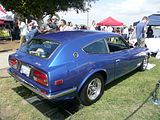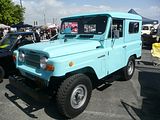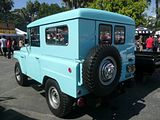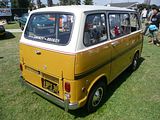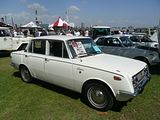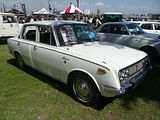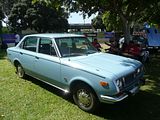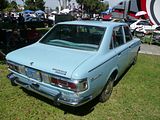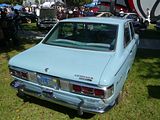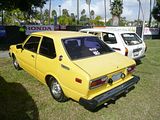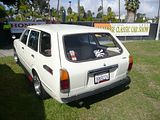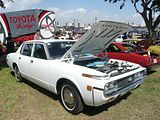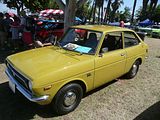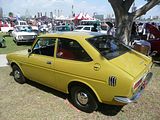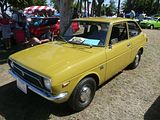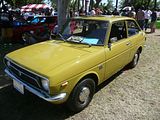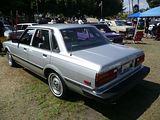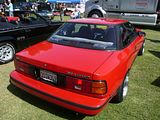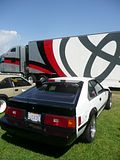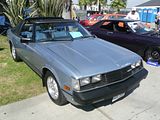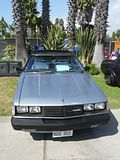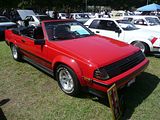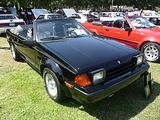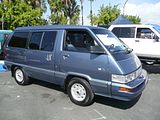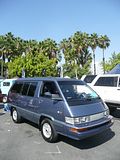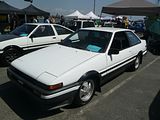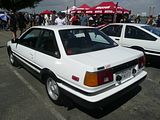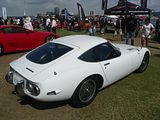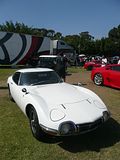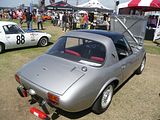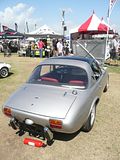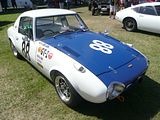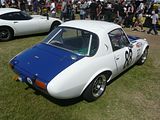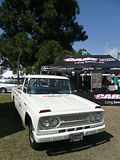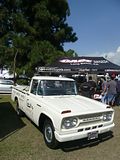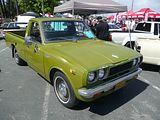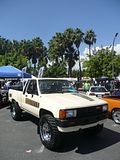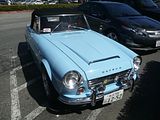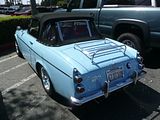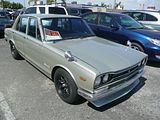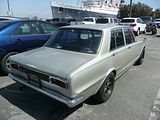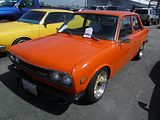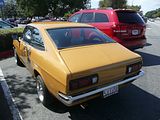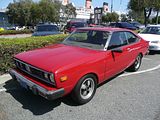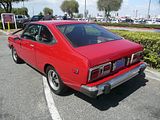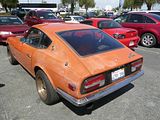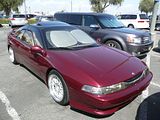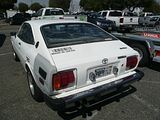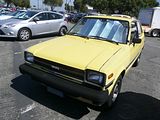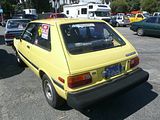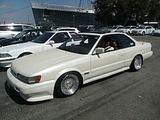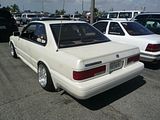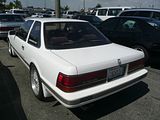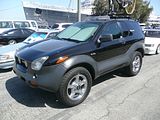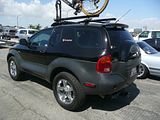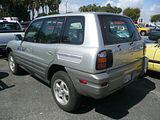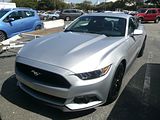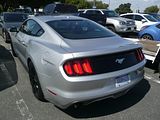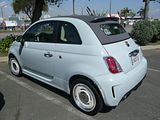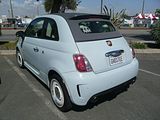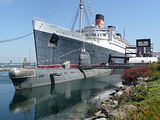Back in 2007, when I was making several trips a year to Los Angeles for work, I stumbled across the fact that a Japanese Classic Car Show was taking place in nearby Long Beach. Intrigued, I went along, as you rarely see older Japanese models at any European event, so my interest was piqued to see what would be in display. What I found was a fascinating and quite diverse collection of machinery from the time when the Japanese marques started to bring their cars to America, which was slightly before they entered the European market, all the way to some of the very latest cars on show courtesy of the North American operations of the major brands. There was plenty to see, but in no way was the event particularly crowded, although when Jay Leno arrived in his Mazda Cosmo, it did suddenly feel busy for a few minutes. Although my trips to the US for work have ended, at least for now, I do still head out to favourite haunts in Southern California a couple of times a year, one trip usually taking place in September, but whenever I have looked, it has seemed that my visit has just missed that year’s Japanese Classic Car Show, or JCCS as the event now likes to call itself, either because I was a week too early, or a week too late. However, having planned a vacation trip for September 2014, when I checked the event date, I found I was in luck, and that the event would take place the day before my return to the UK. I decided to pay another visit. What I found in this, the 10th iteration of the JCCS, is an event which seems to have grown significantly. Whilst there might not have been that many more cars on show, as space is limited by the location, an area in Long Beach right by the historic Queen Mary and a Russian submarine, there were certainly far more people who had turned up to have a look and to reminisce, no doubt, about cars that if they had not once owned, that certainly they had seen on the streets a few years ago. There was quite a mix of cars on show, ranging from some heavily modified and rice-d out cars not to may taste at all, and plenty of original cars, some more familiar than others. Most of the manufacturers had contributed, either with cars from their own collections, or brand new models, so there was lots to see, though getting clear access to a given car without crowds swarming around it did sometimes call for excessive patience.
HONDA/ACURA
The little N Series cars must have seemed tiny to the American consumer when they were first offered, as they are indeed very small by any standard. I was surprised to come across quite so many of these cars. Europeans were offered an N360 with a flat twin 360cc engine, but the ones on show here were all the slightly more powerful N600 cars.
The N Series was not the first Honda car, as the even smaller S Series sports car predates it by a few years. Although these were also tiny machines, they were surprisingly popular in America, so not great surprise to see a number of the S600 and later S800 Roadster models here, and also an S800 Coupe.
The next Honda model was equally petite, the Z. The majority of these were painted in bright orange, and with their stubby cut off tail, they look very distinctive.
The fist Accord was launched in the summer of 1976, as a three door hatch with a 1600cc CVCC engine. A four door version was added to the range eighteen months later. Sales volumes built up slowly, but the time of the launch of the second generation car in late 1981, the model was well established. Brand new designs have appeared every 4 or 5 years since, with the American and European models diverging nearly 20 years ago now. There was a neat line of first and second generation cars here.
In late 1978,Honda launched a coupe model, based on the Accord, called the Prelude. This model then ran, with revisions every 4 or so years, until the mid 1990s when it was quietly dropped from the range, as buyer preferences seemed to have moved from coupes to SUVs. There were examples of both the first and second generation cars here, along with an after-market convertible first generation model. Called the Solaire, this was made by a Santa Ana company who offered the model with a full factory warranty. It is believed that about 100 such cars were produced.
The first CRX models now appear very dainty indeed. Debuting in 1983, this was like a throwback to those S800 sports cars of a decade and half prior. As with most cars, the model got that little bit bigger with each successive generation, and by the time of the third generation, a small and fun to drive sports coupe had become a rather less agile car with a metal roof that underwent a theatrical performance as it raised itself clear of the surround before retreating, as it on stilts into the boot. This is the first generation car, in many ways the most appealing of them all.
Predating Lexus and Infiniti by three years, Honda set up a new brand called Acura in 1986. The first luxury/prestige Japanese brand, it was initially used to market the Honda version of the XX, a car we knew better as the Rover 800 as well as the smaller Integra. Although the Rover (bearing Sterling badges) bombed in the US, the Legend sold well, and the brand quickly gained a strong reputation. Integra models, which evolved with new designs every few years until the mid 2000s have quite a cult following whether in road or racer guise like this one.
In America, the NS-X wore Acura badges rather than the Honda ones which adorned it in the rest of the world.
Bringing things right up to date was this brand new TLX, Acura latest mid-sized car which replaces both the Accord-based TSX and the gawky TL, seen here in racing guise.
ISUZU
In 1978, Isuzu commissioned Giorgetto Giugiaro to design a new sporty car to replace the 117 Coupe (also a Giugiaro design). Several “T” car Chevettes ere delivered to the Italdesign studio in Italy and Giugiaro was given a free rein over the design. The result was a wedge-shaped three-door hatchback called the Asso di Fiori (“Ace of Clubs”), which was shown at the 1979 Tokyo Motor Show to rave reviews. Giugiaro referred to the design as his fifth “Copernican revolution”, integrating the design innovations of many different previous designs into one, mass producible, vehicle. Within 48 hours of its unveiling at the Tokyo Motor Show, Isuzu fast tracked the vehicle into production with minimal changes to the design. Items that remained were the single blade front windshield wiper, and an integrated steering wheel adjustment that also moved the instrument cluster, with wiper controls and exterior lighting controls installed just behind the steering wheel on either side. Called Piazza, the first models rolled off the production line in September 1980 in Fujisawa, Japan, available with either 120 bhp 2 litre SOHC inline 4 cylinder MPFI engine, a carryover from the Isuzu 117 Coupé, or a 135 bhp 2 litre DOHC MPFI I4 engine. Five speed manual and 4 speed automatic transmissions were available, and all models were rear-wheel drive. In April 1984, a 180bhp 185 lb/ft turbocharged SOHC I4 engine was introduced, and the DOHC naturally aspirated engine was phased out in years that followed. Piazzas were available in a multitude of trim levels including Bella, XN, XJ, XE, XG, Nero, and others. There were three different suspension tuning levels, standard, Irmscher, and Lotus. For the US market, this vehicle was introduced as the Impulse in 1983. For the first two years, only one engine was available, the 2 litre SOHC I4 engine, rated at 90 hp. Later a Turbo version was added to the range. Sales were modest. In the UK, one problem was that the cars was far too expensive, and also it was criticised for its poor ride and handling. A new importer, a price cut of over £2000 and suspensions refinements courtesy of Lotus transformed the car, but it was too little, too late, and the car faded without anyone noticing. A second generation model, also called Impulse in the US never made it to Europe. This Impulse was in absolutely fabulous condition – believed to be the best in America, and I can well believe it.
For reasons that totally baffle me, the vehicle that Europeans know as the Trooper was called Big Horn in the US!
LEXUS
This modern LF-A was a real crowd puller, as the car is wherever it is seen. It was part of the display presented by the Toyota US Museum.
MAZDA
Mazda of North America provided the centre piece of the Mazda display, with a fascinating display of Miata cars, the name by which the MX5 sports car is known in America.
It is largely down to the popularity of this model in America that this car became the world’s best selling car of all time, so with this being an important market, it was no surprise not only that the new “ND” model was premiered in a rather odd and not well received “show” in early September. A real car was on display here, giving everyone the chance to see it in the metal for the first time. I really did not like what I saw in the first photos, and I have to say that although it is not quite so awkward in the flesh, it is still not a design that particularly appeals to me.
To mark the 25th anniversary of the Miata, an array of models from the preceding quarter of a century were also on show. Historically significant were production models 14 (blue), 15 (red) and 17 (white).
This Coupe model was a concept that was shown at the 1999 Chicago Auto Show. Following the style that BMW adopted with their Z3, and years earlier, MG with the MGB and Triumph with the GT6, this was a roadster with a neatly integrated fixed roof. It looked quite neat. so it is a shame that the car did not precede to production.
Another concept model was this one, intended for the race track.
Mazda is also world renowned for its use of the Wankel rotary engine, and it was nice to see a wide variety of the models which have used this type of technology since the first production models appeared in the mid 1960s. Oldest example was a 110S Cosmo.
During the 1970s, Mazda hedged their bets with a conventional piston engined version of each of the three models that had the rotary engine as well. It was the rotaries that were on show here, with the RX2, later RX3 in Estate and the RX4 in Coupe guises. Frustratingly, there was also an RX5 model there, one of just 22 believed to be in America, but the owner had a constant scrum around it which meant that I never got a clear enough shot, sadly.
You have to admire Mazda’s persistence, as following yet more development work, another Wankel engined car appeared in 1977, the RX7. By this time, Mazda had concluded that the characteristics of the engine lent themselves better to a sports car than a family saloon. Three generations of RX7 would appear over the next 20 years or so.
MITSUBISHI
Say “GTO” and if people don’t think of the Ferrari 250GTO, then they might – especially in America – come up with Pontiac. Few, I suspect will recall that Mitsubishi used these iconic three letters on a sporty Coupe model that they produced in the 1970s. First shown as the Galant GTX-1 show car at the 1969 Tokyo Motor Show. Sales began in November 1970, when it was the flagship hardtop variant of Mitsubishi’s then new Colt Galant sedan. The Colt Galant GTO exterior was penned by Hiroaki Kamisago, who had previously been sent by Mitsubishi to study at the Art Center College of Design, then located in Los Angeles, California, incorporating a number of stylistic cues from contemporary American muscle cars like the Mustang, Firebird and Cougar, including a long bonnet, raised cut-off ducktail rear, and rounded quad-headlamps and tail-lamps. The GTO was Mitsubishi’s second production car to have full, roll down, side windows and a pillarless design and after the Toyota T40 series Corona of 1966 and Mitsubishi’s own Galant Hardtop launched earlier in 1970; the GTO was the third such Japanese car. Mitsubishi Racing Development (aka Colt Speed) intended the Colt Galant GTO to compete in the prestigious JCCA Grand Prix circuit. However, the OPEC oil embargo of 1973 sounded the demise of GP racing, so the GTO race program was mothballed. Nevertheless, GTOs were successful in rallying, including the famous Japanese Alpine Rally. Mitsubishi chose not to aggressively export the Colt Galant GTO. Besides the home market of Japan, few examples (all right hand drive) were sold abroad. A few reached the UK, but most of the export cars were distributed to New Zealand, and smaller numbers ended up in various Asian countries. At the time, Mitsubishi rarely used their own brand name abroad, so many were sold simply as the “Colt Galant GTO”. In Japan, the few remaining good examples and starting to reach “collector” money status, recent examples at auction have commanded over 900,000 JPY. A few continue to leave the country, and these beautifully presented examples are cases in point.
The GTO was based on the first generation Galant. Premiered in December 1969, the Galant was offered as a competitor to the Toyota Corona, Nissan Bluebird and Mazda 616 Capella. It became Mitsubishi’s first car to be sold in the United States in 1971 when the Chrysler Corporation, the company’s new partner and stakeholder, began importing the car as the Dodge Colt. and was also produced by Chrysler Australia and sold alongside the larger Chrysler Valiant models as the Chrysler Valiant Galant. A second generation Galant launched in late 1973, and these were also sold as Dodge Colts in America. This is an example. Mitsubishi did not set up their own sales operation in America until in the 1980s.
NISSAN/DATSUN
There were a handful of cars here that I did not instantly recognise, as these were Datsun models from the very early 1960s, long before the marque was known in Europe. This 1200 Saloon and the related 1200 Pickup dating from around 1961 do have some styling links to the Austin Cambridge, a car which was build under licence in Japan in the late 1950s and which was one of the catalysts for the modern Japanese motor industry that emerged in the 1960s. This car was initially launched in January 1959, and known as the Bluebird or the 310, and was offered at first simply as a four door saloon. A five door estate appeared in 1960 and the 1 litre engine was upgraded to a 1.2 litre. It was the first Nissan to be exported in any quantity, though in reality this amounted to a handful of cars in America and a reasonable number in Finland. Of those cars on show here, the red Estate was recently discovered in Mexico, and was brought over the border and tidied a bit. Like the accompanying Saloon and PickUp, it is in outstanding condition.
A replacement model, the 410, with slightly more rounded body and a larger 1300cc engine arrived in 1963, and there were a couple of these models, in absolutely pristine condition.
The 510 series cars, sold from 1967, have quite a following, and there were lots of these cars, generally in heavily modified format at the event. There were a few which were reasonably standard looking, and they are presented here. This car was sold in Europe, with 1300 and 1600 engines, but relatively few came to UK shores, whereas it sold well in America and Australia., where its advanced engineering with an overhead cam engine, and rally proven suspension endeared the range to the buying public.
A smaller car, the Datsun 1000 was added to the range in 1966. It was superceded in 1970 by a slightly larger model, the B110, also known as the 1200 or the Sunny. This car was a head-on competitor to Toyota’s Corolla, and it proved popular in many markets, including the UK where it was the first Japanese car to sell in significant quantity. Some of that was attributable to the fact that it came with reclining seats, a radio and disc brakes, unheard of “luxuries” for a car of this price.
This car was replaced in 1973 by the model that Europeans knew as the 120Y Sunny, and which to Americans was the B210. Its timing was god, as it arrived in the market just when fuel supplies became tight following the Yom Kippur war, so a car with rather limited performance but which could deliver 27 mpg US was well received. The limited edition Honey Bee version was a US market only car with minor trim differences, and which is now regarded as a Collectors Car. There was one of these present, as well as the regular model.
The final rear wheel drive Sunny model, called the B310 in America, was launched in 1978, and ran for four years. With rather less transatlantic styling, it was utterly conventional in every respect, but scored highly for reliability and cost of ownership. Two and four door saloons, a coupe and an estate model were offered.
In Europe this car was known as the second generation 140/160J Violet, a mid-sized car that sat between the Sunny and the Bluebird, but which never quite found the popularity of either of those models. Following a January 1973 launch in Japan, by the time it reached the US, it was rechristened the 710. A second generation car, of which this is an example, followed in 1978. It was this model which brought Nissan its greatest level of rallying success ever.
This one should look vaguely familiar to Europeans, too, who will think it is an N10 series Cherry, a car offered between 1978 and 1982. But not in America, where this small front wheel drive car was called the 310.
It was the Americans, more than anyone else who embraced the Z car, so it was no surprise to find quite a number of these models on show, ranging from the 240Z of the early 1970s, through the subsequent iterations of the 1970s and 1980s.
One very special car at the show was this. When the first 240Z was designed, it was intended that there would be a range of models, but in the end it was only the familiar Hatchback Coupe car that entered production. However, designs for other variants were produced and when an enthusiast saw pictures of this one, he had an example specially built. This car is unique and I’d never heard of it, so it was really good to see it at the show.
When I first saw this one, from behind, I assumed it was an early Land Cruiser. I was wrong, as it turned out to be an even rarer Datsun Patrol. The resemblance to the Toyota is obvious, and both clearly took inspiration from a combination of the Jeep and the Land Rover in their design.
SUBARU
There were next to no Subaru models present, which was a bit of a surprise, given the brand’s popularity in America, though it tends to the be the Snow States that buys all the modern ones. This 360 Minivan almost made up for the lack of other Subies, though, as it attracted a lot of interest. The owner said that he drives it every day. Based on the better known and long running 360 car, Subaru’s first model, the proper name for this one is the Sambar. The first generation was announced in 1961, and then a redesigned Sambar appeared in January 1966 with a new more straight edged appearance, with a truck version introduced. The nickname for this generation is “baban” Sambar. It continued to use the 356 cc EK series engine, but now in the 20 hp iteration used in the Subaru 360 since July 1964. Needless to say, that means that even with its diminutive dimensions, this thing is not quick, though the owner did say that he does drive this one every day.
TOYOTA
The Corona 1500 from 1964 is well known as being the first Toyota model to be sold in many countries. In fact, Toyota had already set themselves up in the US before this car was launched, though sales volumes of the Crown, the first car they tried to sell were low and the model had been withdrawn before this Corona came to join the LandCruiser in the US range. Following the naming link with its big brother, the Crown, the Corona was a medium sized family car that was sold in Saloon, Coupe and Estate guises. This was actually the third generation of the model, and it is believed that Italian styling house Farina had a hand in the styling.
To complicate things, in September 1968, Toyota added a second model that used the Corona name, and they kept this dual model line running for some time. Called the Corona Mark II, it was a larger model than the 1500 which continued in production, the idea being that this Mark II would bridge the gap to the larger Crown model. After 1972, the Mark II was spun off as a separate platform. Later Toyota introduced two variations of the Corona Mark II with different model names, with different styling and marketing approaches: the sportier Toyota Chaser appeared in 1977, and later in 1980, the high luxury content Toyota Cresta appeared. The Chaser and Cresta were exclusive to the Toyota Auto Store locations, while the Mark II remained at Toyopet Store locations.
There have been Corollas since 1966, during which time, and ten distinct model generations, a vast array of different body styles and versions have been offered. These days the model epitomises the automotive appliance almost better than any other car, so it is unlikely that vast numbers of them will be kept as future classics, but some earlier Corollas do survive as these models evidence. This pair of 30 models, in saloon and estate guise, date from the late 1970s.
Top of the Toyota range is the Crown. A long running nameplate which goes back to 1955, this generation model was sold from 1971 to 1975 in small quantities in Europe, as Saloon. Estate and Coupe, though survivors are rare.
By contrast, the bottom of the range was the 1000, or Publica. I was surprised to see this one in America, and even more so when I learned that this car has covered just 4000 miles since new, back in 1976. A true time warp.
The 1978 Tercel was the first ever front wheel drive Toyota. It was positioned slightly below the Corolla, which remained in production as Toyota hedged their bets on whether customers would accept front wheel drive or not. As the Corolla got larger with every generation, and once it switched to front wheel drive in 1983, the Tercel ended up sitting lower in the range, as an entry level model.
For many export markets, Toyota reduced the confusion of the two different Corona models by calling the latest version of the larger model the Cressida. Markets first saw cars with this badge in 1977, and this utterly conventional rear wheel drive model was offered with Saloon, Estate and Coupe bodystyles just as its predecessor had been. This was the era when every Japanese marque replaced their models on a strict 4 year cycle, and this is one of the second generation of cars to bear the Cressida name, dating from 1981 to 1986. The owner said that he has had this one from new.
The Celica was first launched in 1971, as Toyota’s rival to the Capri, and it ran for 33 years, and through seven distinct model generations. The first cars were two door coupes and later a three door hatch model was added to the range.
However, by the time the second generation car arrived, and it was clear that America had not banned the convertible, it did not take long before someone came up with an open topped model, and small numbers of cars in successive generations had their metal roofs removed until Toyota got the idea and offered a factory designed version with the fifth generation car.
We tend to think that the Plymouth Voyager and Renault Espace were the first of the “people carriers” (or Minivan in American speak). but in fact the Japanese sort of got there first. This machine, known as the Space Cruiser in Europe and just the Van in America (though this one seemed to be called a TownCruiser) was launched in 1983. Admittedly, it was really a carefully adapted version of the TownAce van, in the same way that VW had been modifying their Type 2 van to carry passengers, but it was definitely an early way of carrying lots of people in the Minivan style.
Don’t fooled by the Trueno naming. That is simply someone applying the Japanese model name to their car, and is not uncommon. This is an AE86 based Corolla, and as such the car that allegedly inspired today’s GT-86 (or Scion FR-S if you are an American). Europeans only saw these in 3 door Liftback form, but they came as a Notchback coupe as well.
Toyota have a US museum in nearby Gardena, which is open by appointment (one day I will get to see the contents in full!), and a trio of cars from the collection had been brought along. The legendary 2000GT was the one that everyone wanted to see, and alongside were a couple of the diminutive 800 Sports model
Toyota has made a huge name with its trucks over the years. They have got steadily bigger and bigger, so some of the older ones on display look quite small now even though at the time that they were new. Oldest of the models on show was a Stout, a name which I confess was new to me. Three generations of Stout were offered, and this is the second of them, with this one running from 1960 to 1979, and being the launch model for Toyota in South Africa. It featured a 1900cc engine.
In America, the Stout was replaced in 1969 by the first of the HiLux, initially a slightly smaller design. However, with every subsequent model change, the HiLux has got bigger and bigger. US markets moved away from the HiLux name some time ago, and the later of the two examples shown here was called the Truck with top spec models, such as this one, adopting the extra designation SR5 (Sport Rally 5 speed) when new. Nowadays, this truck, the smaller of the two that Toyota offer, is called the Tacoma.
IN THE CAR PARK
After leaving the main event, I decided to take a stroll around the main car park, as I had noticed on arrival that were plenty of cars in there which would have been worthy of the event. And sure enough, there was plenty of interest to be found, and I heard more than one group of attendees saying that they had almost taken more pics in the car park than at the event itself!
This is one of the earliest of the small Nissan/Datsun sports car, with a 1500cc engine.
This Skyline is an example of the car that was initially launched by Prince Motors, before the marque was acquired by Nissan. These cars are highly prized nowadays
A similar size, but rather less exciting to drive was the 180B Bluebird as we knew it in Europe, or the 610 Series as the Americans called it. This is the SSS Coupe version.
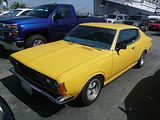
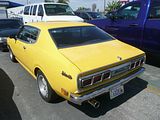
There were plenty of examples of that car’s predecessor, the 510 in the car park. Few of them were even close to original.
This is a Coupe version of the Nissan B110 1200 Sunny.
Reflecting the fact that Coupes stayed in the catalogue for quite a while was this second generation Violet, the 710.
Two rather more sporting models were an early 240Z and the quirky Subaru SVX.
There were a couple more of the AE86 generation Toyota Corolla models, again with Trueno badging.
This earlier 30 series Corolla Coupe looked rather less pristine.
A few years more recent than the Corolla was this, a late 1970s Starlet. It was advertised as for sale, and someone was getting quite excited as apparently it is a rare variant of a car that did not sell in significant quantity in the US.
This pair of large mid 80s Coupes looked from a distance as if they were both the same, but get closer and you realise that in fact they were completely different: a Toyota Soarer and a Nissan Leopard, so definitely direct rivals, neither of which was exported to Europe when new, which perhaps explains why I had to check the badges just to be sure.
Most bizarre creation here was an Isuzu VehiCross. Originally seen as a concept vehicle at the 1993 Tokyo Auto Show, this rather odd looking thing, the design of which is usually attributed to British designer Simon Cox was subsequently signed off for production with very changes from the concept car. Produced from 1997 for 2 years for the Japanese market 1997 and then from 1999 to 2001 for the US market, it shared much of its components with the Trooper, including both its 3.2 and 3.5 litre V6 engine that produced 215 bhp and 230 lb/ft at 3000 rpm of torque. The vehicle also featured the Torque on Demand (TOD) 4-wheel-drive system produced by Borg Warner. A small, sporty 2-door crossover vehicle with aggressive external styling, including short overhangs, an aggressive forward stance, titanium “teeth” in the grille, a black bonnet insert, and black plastic cladding over the entire lower half of the vehicle, the US versions came equipped with 16″ polished wheels in 1999 and 18″ chrome wheels during the remainder of production. The Japanese version came equipped with 16″ alloys with chrome centre caps Believe it or not, the VehiCROSS was highly regarded for its cross-terrain performance. It combined a computer-controlled AWD system for on-road driving and a locked-differential low-gear 4WD system for off-road driving. The Japanese version offered a 2WD non TOD or 4WD TOD option. The US-only constant 4WD TOD, with 12 independent sensors for detecting wheel spin and capable of redirecting power to the wheels with the most traction, gives the VehiCROSS a high level of traction on wet and icy roads. It also has a high level of performance for its height. While possessing on-road nimbleness, its body-on-frame truck construction, suspension and 4WD gearing make it very capable off-road. Sales were intentionally limited, with only 5958 vehicles being produced between 1997 and 2001; 1805 were produced for the domestic Japanese market and the remaining 4,153 sold in the United States. As it stands, the vehicle has an obscure role in history; although, the vehicle appeared in the 2000 film Mission to Mars as a convertible fitted with futuristic engine sound effects, and also briefly in Babylon AD 2008 starring Vin Diesel.
Another rarity was this, an EV version of the first generation Toyota RAV4. Produced from 1997 to 2003, the RAV4 EV closely resembled the regular petrol engined version, just lacking an exhaust pipe and fitted with a single speed automatic transmission. It had a governed top speed of 78 mph and a tested 0-60 time of around 18 seconds, depending on state-of-charge on the batteries. Its EPA rated driving range was 95 miles, with an EPA combined fuel economy rating of 43 kW·h/100 miles, equivalent to 78 mpg. The RAV4 EV battery pack used 24 12-volt, 95Ah NiMH batteries capable of storing 27.4 kWh of energy. with an EPA rated range of 95 miles, and a typical recharging time of around 5 hours. It proved to be very durable, with many exceeding 150,000 miles on the original batteries. Beyond the unusual power train (batteries, controller and motor), the remaining systems in the RAV4 EV were comparable to the petrol RAV4. The power brakes, power steering, air conditioning, tyre wear and suspension components are similar except that they use electric power sources. The power brakes used an electric pump to provide vacuum instead of deriving vacuum from the engine manifold. The power steering and air conditioning systems used electric motors instead of mechanical energy delivered by fan belts, whilst the passenger compartment was heated electrically. Initially, RAV4 EVs were only available on a three-year fleet lease, not for sale and not for lease to the public, at a few dealerships beginning in 1997. From 2001, leases were made available to small “fleets of one” purportedly run by small businesses. In March 2002, due to a shift in corporate policy, the RAV4 EV was made available for sale to the general public, but only 328 of them sold. No one knows for certain what prompted Toyota to change their position, since they had long since fulfilled their obligations under the MOA with the California Air Resources Board’s zero-emissions vehicle (ZEV) mandate via its fleet lease program. The MSRP was $42,000, but in California, ZIP-grant rebates of $9,000, decreasing in 2003 to $5,000, and a $4,000 credit from the Internal Revenue Service brought the price down to a more palatable $29,000 including the home charger. More RAV4 EVs were sold than had been planned for manufacture through standard assembly line techniques, with 1484 of them made. Toyota filled every order despite the fact that the last few dozen vehicles had to be assembled from spare parts due to a shortfall of production components (a significantly more expensive way of building a vehicle). This unexpected development caused deliveries to trickle on into September 2003. It also caused variations in the vehicles such as heated seats, retractable antennae, mats, etc. The last of the 328 EVs was sold in November 2002. many units were sold after the vehicle was discontinued. It is believed that there are almost 500 units still in use.
Bringing things right up to date was a brand new Mustang. Yet to go on sale, this one sported Manufacturer plates, and I know that the Press Launch has been in California, so it was not a complete surprise to see it. I had seen a yellow car earlier in the week, too. It was tucked away in one corner of the car park, so I suspect that few people actually saw it.
And finally……… yes, you can’t go many places these days without finding an Abarth. This is a genuine US model Fiat Abarth 500 (as they are called in the US), which the owner – an Abarthisti – has been gradually converting to this very different look.
The commentator kept telling everyone that this is a “World Class” event. I think that is probably stretching things somewhat, though there are not that many other events with this theme, it has to be admitted, but it was certainly an interesting show to visit. It kept me interested for long enough that, just as in 2007, I did not have time to do more than take a picture of the Queen Mary from the outside. Another year, perhaps?

